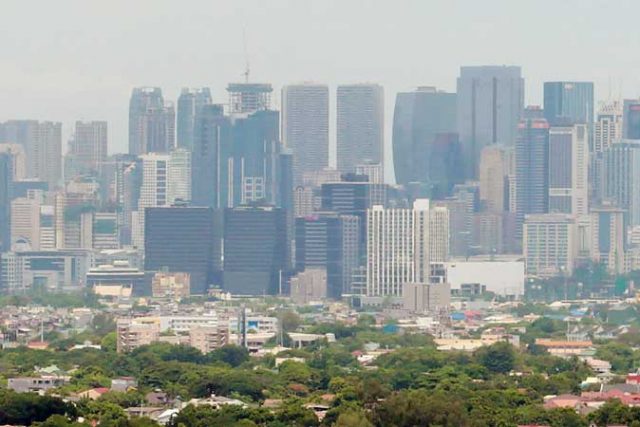S&P sees PHL economy growing by 6% this year

S&P GLOBAL RATINGS lowered its 2021 growth forecast for the Philippines to 6% on Thursday, as low public mobility amid the coronavirus pandemic continues to be a drag on recovery.
The latest forecast is significantly lower than the 7.9% gross domestic product (GDP) growth estimate S&P gave in March, and matches the low end of the government’s 6-7% target for the year.
“Downside risks around our forecasts remain higher than normal. Uncertainties around the extent and duration of low public mobility due to the pandemic will continue to be the primary concern for growth,” S&P said in a note on Thursday.
The Philippines’ 2021 GDP outlook is faster than S&P’s estimates for Indonesia (4.4%), Malaysia (4.1%), Thailand (2.8%) but is slower than expectations for Vietnam (7.3%) and Singapore (6.2%).
Meanwhile, S&P raised its Philippine GDP estimate for 2022 to 7.5% from 7.2%. This is well within the government’s 7-9% growth projection for next year.
While lockdown measures have been gradually relaxed and daily coronavirus cases in Metro Manila and nearby provinces have decreased, S&P noted that public mobility “remains very low.”
Private consumption, which makes up roughly 70% of the Philippine economy, has remained muted as public transportation continues to operate on a limited capacity.
In the first three months of the year, household spending continued to shrink by 4.8%, a slight improvement from the 7.3% contraction in the fourth quarter of 2020.
The Philippine economy contracted by a record 9.6% in 2020. In the first quarter, GDP shrank by 4.2%.
S&P said the sluggish rollout of COVID-19 vaccines will also weigh on the country’s growth prospects.
“The vaccination effort is picking up but remains slow. As such, a good chunk of the substantial base effects that we had expected to boost domestic demand growth have likely been diminished, leading us to revise our growth forecast down to 6.0% from 7.9%,” S&P said.
It also noted that impending rate hikes by the US Federal Reserve might spill over into financing costs for local companies, “further eating into the domestic demand recovery.”
The US Federal Reserve last week signaled it may raise interest rates as early as 2023.
The credit rater expects the Bangko Sentral ng Pilipinas (BSP) to start hiking interest rates next year by 25 basis points to 2.25%. The overnight reverse repurchase rate is gradually expected to continue increasing to 2.75% and to 3% by 2023 and 2024, respectively.
On the other hand, S&P said the recovery in exports might help support economic growth.
Merchandise exports in April surged by 72.1% to $5.71 billion, based on latest data from the Philippine Statistics Authority. It increased by 19% to $2.37 billion in the first four months of 2021 from a year earlier.
Meanwhile, S&P expects headline inflation to hit 4.5% this year, beyond the BSP’s 2-4% target, before easing to 2.2% by 2022.
“We expect Philippine inflation to fall in the second half of the year, with some key transitory factors easing by then. Inflation in the first half was driven by one-off increases in food prices, driven by a shortage in pork, as well as a low base in oil-related prices from last year,” S&P economist Vincent Conti said in an e-mail.
In May, S&P maintained its “BBB+” investment grade rating for the Philippines, citing expectations of a healthy economic recovery that is seen to help the country improve its fiscal standing that was affected by the pandemic. The stable outlook was kept, suggesting the rating will be unchanged for the next 18 to 24 months. — Luz Wendy T. Noble
